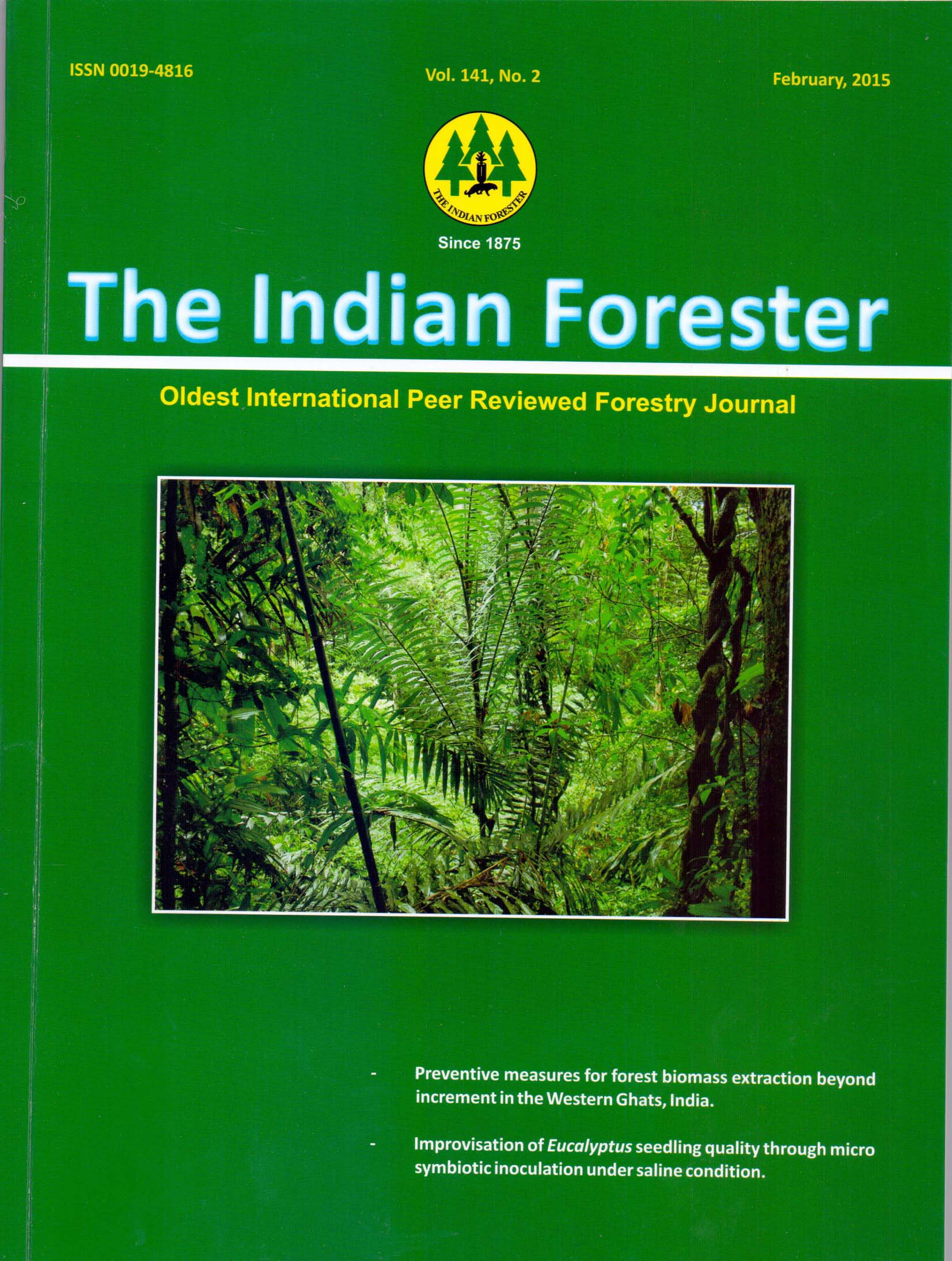Effect of Aspect and Tillage Practices on Growth and Yield Attributes of Kalmegh (Andrographis Paniculata)
DOI:
https://doi.org/10.36808/if/2015/v141i2/60685Keywords:
Andrographis paniculata, Topographical Aspect, Tillage Practices, Degraded Land.Abstract
The appropriate aspect of a mountainous slope coupled with suitable tillage practice can make very significant influences on the growth and yield attribute of a cultivated plant species especially in degraded land. So present paper aims to evaluate the effect of aspect and tillage practices on growth and yield attributes of Andrographis paniculata when raised in degraded or wasteland of mountainous area. A. paniculata was grown on three topographical aspects viz Northern, North western and Western at a spacing of 30 cm × 30 cm, followed by three tillage depths viz minimum (0 cm), medium (up to 10 cm) and deep tillage (up to 15 cm). Growth attributes like plant height, number of branches per plant, leaf area index and yield showed significant difference with respect to aspect and tillage practices and highest growth and yield attributes were found when herb was grown on western aspect under deep tillage. Thus the knowledge and selection of suitable geographical aspect and tillage practice for raising A. paniculata can be helpful in cost effectiveand environment friendly cultivation with the optimum yields in degraded mountainous area.References
Chauhan J.S., Tomar Y.K., Singh N.I., Ali S., Badoni A. and Debarati R.A. (2009). Assessment of compatible substratum for Andrographis paniculta standard seed germination testing. Journal of American Science, 5(6): 70-75.
Dhillon G.S., Grewal S.S. and Altwal A.S. (1979). Developing agri-silviculture practices. Effect of farm trees (Eucalyptus) on adjoining crops. Indian Journal of Ecology 6(11): 88-96.
Gomez K.A. and Gomez A.A. (1984). Statistical procedures for agricultural research. edn 2, pp. 680 John Wiley and Sons, New York.
IBSRAM. (1990). Organic-matter management and tillage in humid and sub-humid Africa. IBSRAM Proceedings No. 10. Bangkok, International Board for Soil Research and Management.
Kumar A., Dora J., Singh A. and Tripathi R. (2012). A review on king of bitter (Kalmegh). Int. J. Res. Pharmacy and Chem., 2(1):116-124.
Laryea K.B., Pathak P. and Klaij M.C. (1991). Tillage systems and soils in the semi-arid tropics. Soil and Tillage Research, 20: 201-18.
Niranjan A., Tewari S.K. and Lehri A. (2010). Biological activities of kalmegh (Andrographis paniculata Nees.) and its active principles - a review. Indian J. Nat. Prod. Res., 1: 125-35.
Downloads
Downloads
Published
How to Cite
Issue
Section
License
Unless otherwise stated, copyright or similar rights in all materials presented on the site, including graphical images, are owned by Indian Forester.





